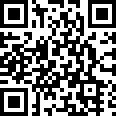As an advanced marking technology,
Pneumatic Dot Peen Marking Machine use high-energy laser beams to permanently mark the surface of objects. On the mineral water bottle production line, Pneumatic
Dot Peen Marking Machine accurately engrave production date, batch number, barcode and other information on the surface of plastic bottles through computer control systems.
Compared with traditional ink jet coding technology, Pneumatic Dot Peen
Marking Machine have significant advantages such as non-contact, no consumables, and permanent marking.
CO2 lasers and fiber lasers are the two most commonly used types at present. Among them, fiber lasers are more widely used in the field of plastic bottle marking due to their higher energy efficiency and longer service life.
Modern
Dot Peen And Scribe Marking systems can be easily integrated into high-speed filling production lines to achieve a marking speed of hundreds of bottles per minute. The system is usually equipped with an automatic detection device that can identify the position of the bottle body and adjust the laser focus in real time to ensure the consistency of marking on different bottle types.
For PET materials commonly used in the mineral water industry, Pneumatic Dot Peen Marking Machine can form clear marks without destroying the bottle structure by precisely controlling energy parameters. Some high-end systems also support variable data marking to meet the traceability requirements of "one object, one code" and provide technical support for product anti-counterfeiting and supply chain management.
Dot Peen And Scribe Marking technology has significantly improved the marking quality and efficiency of the mineral water production line. The marking content is not affected by the ambient temperature and humidity, and there will be no problems such as blurring and falling off of traditional inks. According to statistics, after adopting Pneumatic Dot Peen Marking Machine, the marking defect rate of the production line can be reduced to less than 0.1%, while reducing the downtime caused by replacing nozzles and adding inks, and the overall production efficiency is improved by 15%-20%. In addition, the laser system does not need to use chemical inks, avoiding the pollution of the workshop environment by solvent volatilization, which meets the increasingly stringent environmental protection requirements of the food industry.


